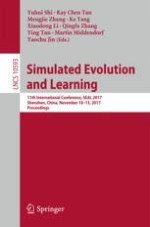2017 | OriginalPaper | Buchkapitel
Learning to Describe Collective Search Behavior of Evolutionary Algorithms in Solution Space
verfasst von : Lei Liu, Chengshan Pang, Weiming Liu, Bin Li
Erschienen in: Simulated Evolution and Learning
Aktivieren Sie unsere intelligente Suche, um passende Fachinhalte oder Patente zu finden.
Wählen Sie Textabschnitte aus um mit Künstlicher Intelligenz passenden Patente zu finden. powered by
Markieren Sie Textabschnitte, um KI-gestützt weitere passende Inhalte zu finden. powered by
